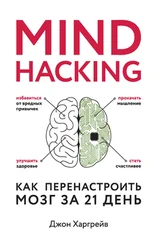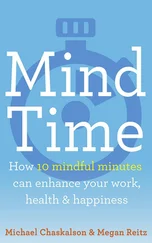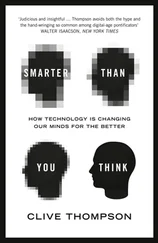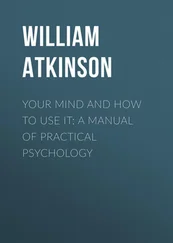“Bare metal” is a term we use for a new piece of computer hardware with no operating system or even an assembler. It’s just clean hardware with no layers of junk added in. Sometimes we’ll talk about “programming on the bare metal,” which is the incredibly technical work of developing these tools for a new computer. In the hierarchy of geekdom, developers who bit bash on bare metal are the highest-level (i.e., lowest-level) geeks around.
In mind hacking, we’re approaching our minds with that same spirit of “getting to the bottom of things,” or going for the root loops that are controlling our emotions, thoughts, and actions. In fact, METAL can be used as an acrostic for:
M y
E motion
T hought
A ction
L oop
We’ve seen how everything we do is preceded by a thought, and that thought is often preceded by an emotion. By developing clarity of mind through regular concentration games, then using the debugging tools outlined in this section, we can track down the logical sequence of Emotion-Thought-Action that is causing problems in our lives. (You’ll soon learn how to reprogram your METAL, but you can’t fix the bugs until you identify them.)
On your pad of paper, after your daily concentration game, I recommend tracing My Emotion-Thought-Action Loop, using the debugging tools you’ve just learned. It might look something like this:
Emotion
Thought(s)
Action(s)
Anxiety about a new assignment at work
I don’t know if I can deliver this in a way that will make my boss happy .
Doubting the results of my work, redoing the project multiple times, unnecessary overtime and stress
Depression about my relationship with my partner
We’re not as close as we were before, and we’re drifting further apart .
Getting angry at my partner over minor issues, passive-aggressive behavior, and frequent criticisms
Self-criticism over that stupid thing I said
Why did I say that? Why did I say that? WHY DID I SAY THAT?
Being self-conscious about everything I say to this person in the future
Regret about that decision I made in the past
I shouldn’t have done that. I wish I could go do it all over. My life would look so much better .
Self-doubt and procrastination about making any decisions in the present
Worry about my career after graduation
The job market is terrible. I have no experience. There are lots of other people more qualified than me .
Reading gossip sites and watching funny llama videos instead of looking for a job
There’s a strange kind of power from seeing your emotions, thoughts, and actions spelled out in words. Until you write them down, they will exist as swirls of feeling in your mind. Defining them gives us mastery over them. When you take the time to articulate these thoughts and feelings, to write them down as best you can, you gain power over them. For identifying your problem loops, METAL is a useful model.
MIND GAME
Name That Loop
For the rest of the day, try to “catch” your negative mind loops as they happen. Watch for signs of mental “pain” or friction, which are a good indicator of thought processes that need debugging.
Debug each negative thought loop down to its root problem using one of the three techniques:
• The Five Whys: Ask “Why?” five times.
• Worst-Case Scenario: What’s the worst thing that could happen?
• Third-Person Perspective: What would you say if you were hearing this from someone else?
At the end of the day, write down each of the “root problems” you uncovered on your practice sheet, preferably using the METAL method.
In Part 1 of Mind Hacking , we’ve seen how the mind is a naturally noisy place and how we can cultivate focus and awareness of the mind’s programming through regular concentration practice. Using the laser-like clarity that we develop through this practice, we can examine areas of our thinking where we have pain or difficulty, debugging our negative loops with skill and precision. This sets the stage for active reprogramming of the mind, which we’ll cover next, in Part 2.
This is where things get fun.
PART TWO
IMAGINING
[2.1]
“Imagination is more important than knowledge.”
—Albert Einstein, as quoted on every dorm room wall at every college ever
Albert Einstein may have been a genius, but he probably wasn’t the best patent clerk.
Years before Steve Wozniak started building the world’s largest computer company on his lunch breaks, another legendary figure was scribbling out equations at his day job. Einstein was a lowly government worker who toiled away at the Swiss patent office, reviewing patent applications. He had recently graduated from the Swiss Federal Institute of Technology with barely average grades, and no one would hire him as a physics teacher. 1
One of Einstein’s high school teachers, frustrated by his lack of obedience, had proclaimed that “nothing will ever become of you,” and it looked as if he might be right. Day after day, Einstein was stuck in his low-level government job, a third-class patent clerk with little hope of escape. When he applied for a promotion to second-class patent clerk, he was turned down because his supervisor thought he didn’t know enough about mechanical engineering!
What the job gave Einstein, however, was plenty of time to think. Whenever an idea would strike him, he would scribble down notes and tuck them into a drawer in his desk. (He jokingly called this drawer his “department of theoretical physics.”) Einstein’s revolutionary theories, and his most famous work, were achieved not by working in a lab or by performing physical experiments. They were developed in his mind .
Free from the typical constraints of academia, Einstein developed his theories as “thought experiments.” For example: What would you experience if you were in an elevator that went into freefall? Or: What would you see if you were riding a beam of light? These were ideas that could not be easily tested, but reflecting upon them led Einstein to his world-changing ideas. First he did it in his head, then he did the math. There was one way to escape his day job, and that was in his imagination .
In a similar way, your life is a thought experiment. We’ve seen that your mind is constantly feeding you a stream of thoughts, most of which you accept without question. We can burn a lot of CPU cycles on these thoughts, which our mind spins into elaborate stories, some of which are downright crazy.
Jim arrives at work to learn that his company has been bought out by a larger competitor. He convinces himself that the new owners will downsize his job, and begins obsessively worrying over who will hire him after he’s laid off. His mind begins spinning stories that he will never find a job in program management and he will end up managing an Arby’s. (The truth is that Jim actually gets rolled into a better team at the new company.)
Lucy gets unfriended by her longtime college pal on social media. She spends the next few weeks heartbroken, wondering what she did to offend her and how they could have grown so distant. She convinces herself that she is not friendable, that no one wants to be close to her. (The truth is that her college friend was trying to move her contacts over to a new account.)
Chris notices a small rash on his forearm. He ignores it at first, but when it grows larger, so do his anxieties. He researches “arm rash” on the Internet, finding the worst possible diseases, complete with lurid photos. He phones his doctor in a panic, convinced he is the first victim in a new pandemic of the Black Death. (The truth is, it’s poison ivy.)
Читать дальше
![Джон Харгрейв Mind Hacking [How to Change Your Mind for Good in 21 Days] обложка книги](/books/404192/dzhon-hargrejv-mind-hacking-how-to-change-your-min-cover.webp)











